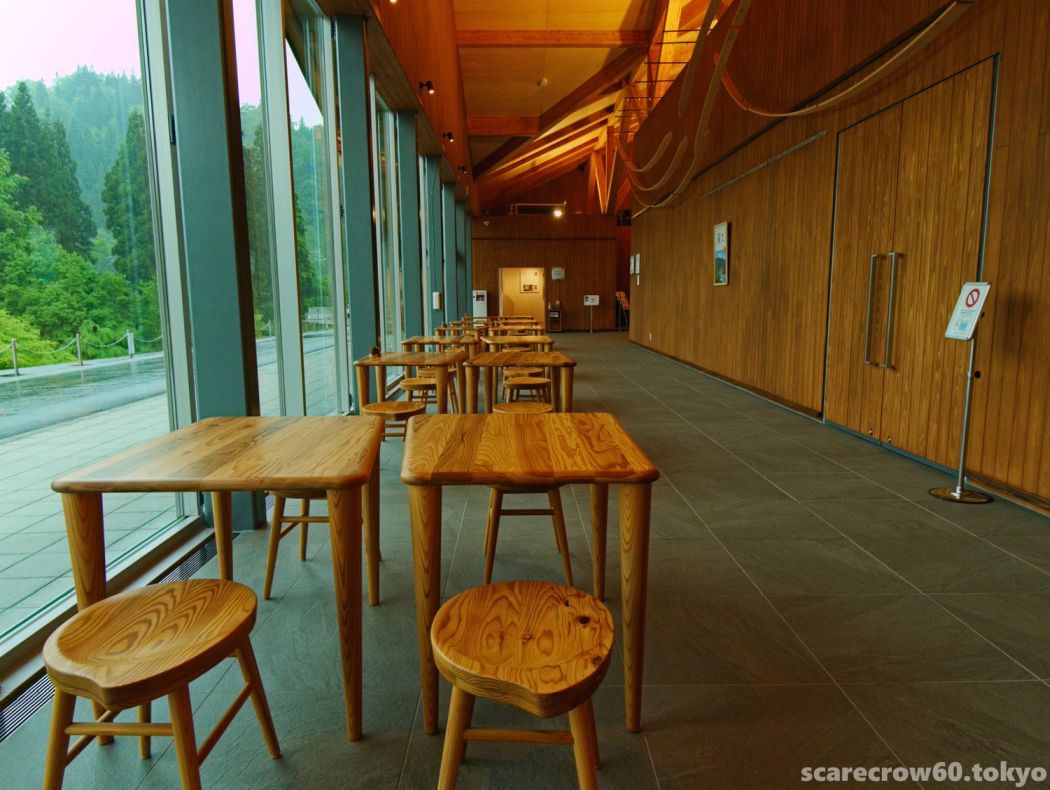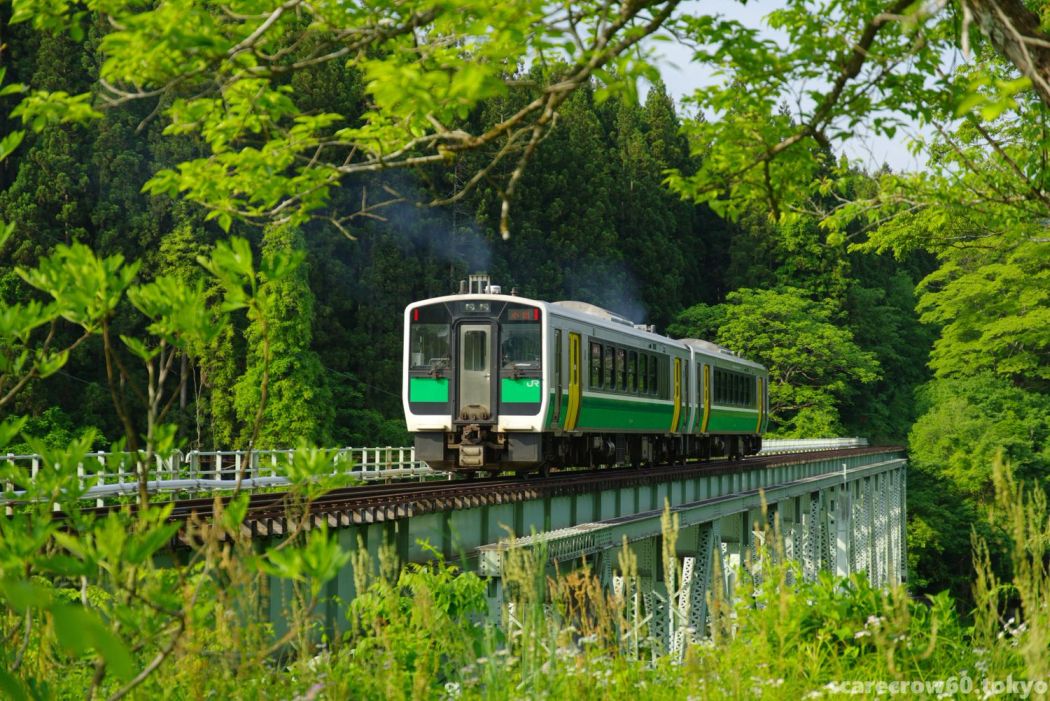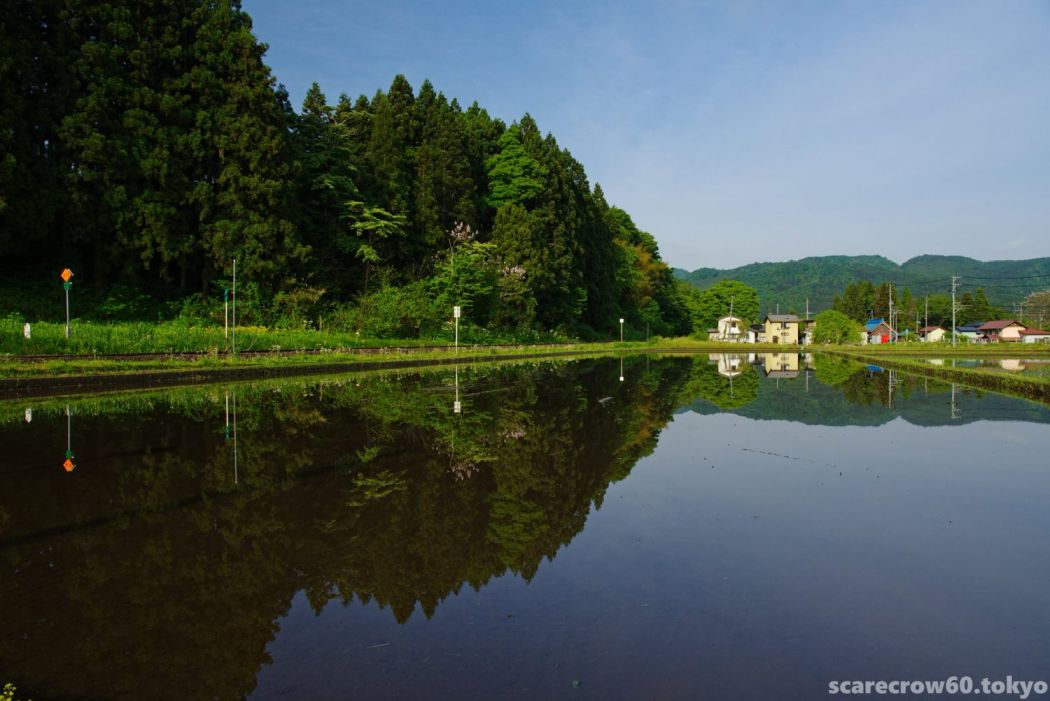As I mentioned two weeks ago, I had a chance to visit Miori, Kanayama-cho during my photo tour of Oku-Aizu, and I’d like to say that it was quite fun.
Here is a link to the official site and a full view of the facility.
According to a quote from the official website, this is what the facility is all about.
“The Oku-Aizu area was developed as a large-scale power source and supported the postwar reconstruction period with its electric power supply. Miori introduces the characteristics and historical significance of such hydroelectric power generation and the various attractions of the Oku-Aizu region through art, videos, and other creative exhibits.”
As mentioned in a recent article, the region is home to huge hydroelectric power generation hubs such as Tagokura Dam. The owner of Miori, Tohoku Electric Power Company, is very mild in his description, but from my understanding based on various information I have gathered, the process of building these dams in the Showa period (1926-1989) must have enriched the Oku-Aizu region with industrial capital, but at the same time, it must have also made a great sacrifice, as entire villages were sunk to the bottom of the dammed lakes. For this region, the power development project must have been a source of both light and shadow. I think it was inevitable that the electric power company, which was the main operator of the project, established a base here to preserve the history and promote tourism as a measure for regional development and reconciliation.
But enough of my old man’s petty theories, I enjoyed Miori because it was simply beautiful and worth seeing.
It was a dark cloudy day, so the amount of light was limited, but there was a magnificent stained glass work, “Oku-Aizu Hymn” by Sadakazu Usui. At a glance, you can tell that the main motifs are the Tadami River and the dam.
The first chairman of Tohoku Electric Power Company when he was pushing hard for power development in Aizu was that Jiro Shirasu. Since I feel some geographical connection with this Kobe native, I was quite taken by this Jiro Shirasu related exhibit.
This Miori information impressed an Aizu-tied acquaintance of mine who is familiar with the life of Shirasu family, “That’s where Aizu and Jiro are connected!”.
The building of Miori was designed by Kengo Kuma. The impressive use of wood in the ceilings and interior design certainly gives the building a massive Kuma feel.
In front of the wide-open window is a woody rest corner, and it certainly doesn’t look bad to take a rest here, relaxing and enjoying the view of the Tadami River.
Unfortunately, the weather was a bit of a bitch that day, but if it had been sunny, so be it.
There is a gallery of artwork related to the region and a corner introducing Oku-Aizu’s specialty products with paintings by Tsurutaro Kataoka, but these are not to be photographed, so I won’t cover them in this article.
I enjoyed these (rather child-oriented) science enlightenment exhibits the most.
When you turn the handle in the lower right corner, the LEDs on the hydroelectric explanation board light up and shine in sequence. When you were a child, didn’t you turn these LEDs with great heat?
↑The beautifully lit LEDs in the photo up above are thanks to my frantic turning of the handle, which I did when I was fortunate that no one was watching (lol).
It was a good opportunity to take a break and enjoy an hour of leisurely touring, and admission was free!
I think Miori is a place that needs to be better known and more crowded, so I thought I would introduce it to you.



